Nothing, not rain, not cold, not heat, can derail a perfectly good hike as much as a pestering little blister, making every step miserable. Many hikers and backpackers assume that they come with the experience, but that is not the case. Getting blisters on your feet is common, but not inevitable.
If you feel like you have tried anything to prevent blisters, tried out countless boots, talked to boot reps, questioned your hiking buddies and still hobble your way through hikes, you might have forgot the key ingredient: hiking socks.
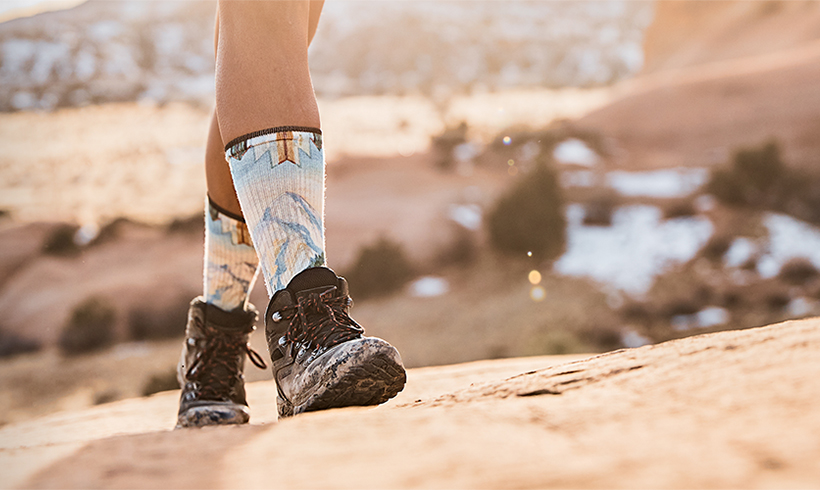
Best Merino Wool Hiking and Walking Socks
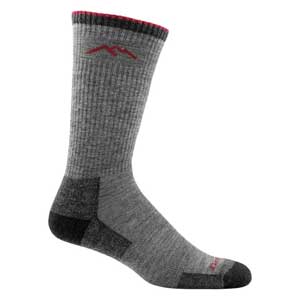 |
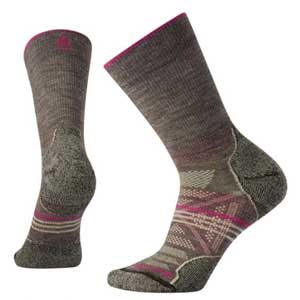 |
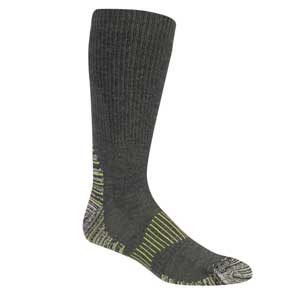 |
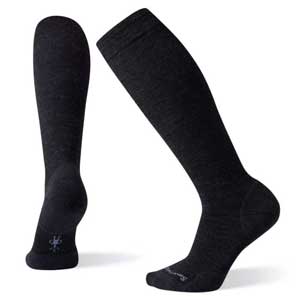 |
|
| Darn Tough Hiker Boot Sock | Smartwool PHD Outdoor Light Crew | Carhartt Man’s Force Cold Weather | Smartwool Compression Light Elite OTC | |
|---|---|---|---|---|
| OVERVIEW | A high-quality sock that checks all the boxes – a comfortable and sleek hiking sock that will help in preventing hot spots and blister development. | Featuring Indestructawool™ technology, a wool-based durability construction, these hiking socks are ready for any adventure on your list. Cushioning on the entire bottom of the foot and mesh ventilation provide optimum comfort. | The SUV of socks. These men’s midweight socks are made with wool-blend yarn that wicks away sweat and dries quickly. Mesh panels add ventilation, and targeted cushioning absorbs shock in high-impact areas. | These over-the-calf socks offer a 10-20mmHg graduated compression rating, cushioning on the ball of foot and heel to help keep your feet alive and not fatigued. They come in men’s and women’s fit. |
| FABRIC | 64% Merino Wool, 33% Nylon, 3% Lycra® Spandex | 58% Merino Wool, 39% Nylon, 3% Elastane | 51% Acrylic, 23% Wool, 13% Nylon, 10% Polyester, 1% Spandex, 2% other | 52% Merino Wool, 43% Nylon, 5% Elastane |
| BUY NOW | BUY NOW | BUY NOW | BUY NOW |
How do socks help you avoid blisters?
Even the best hiking shoe cannot save you from blisters if you are wearing shoddy socks. Hiking socks are highly engineered to offer cushion, support, and comfort while reducing blisters and being durable. Primary contact points, like the ball of foot, heel, provide good cushioning. Other areas of the sock, like arch and instep, are designed to give good fit and support. A well-fitting sock helps reduce the chance of blisters while offering comfort on the trail.
Two-Pair Sock System
Experienced hikers swear by the two-pair sock system that includes a thin synthetic inner socks, or a sock liner, and a thicker outer wool sock. The inner sock helps reduce friction with your foot, and wicks away moisture. The outer layer absorbs the moisture and provide insulation and cushioning.
The disadvantage of wearing two pairs of socks is that it can make your feet hotter. Heat is one of the elements which makes your feet vulnerable to blisters. Another annoyance is that liner socks can make your boots fit too tightly. A tight fit means that you will be even more prone to blisters.
Toe Socks
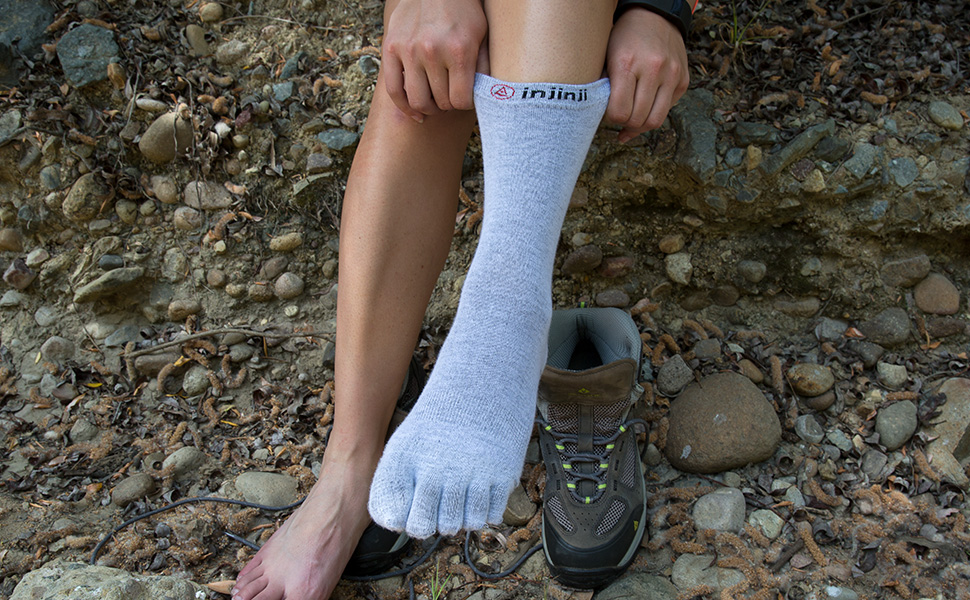
If you have ever gotten blisters between your toes and know the torture, you might have considered getting a pair of toes socks. Based on the experiences, these might prove to be more than a Band-Aid solution.
Toe-socks separate and cushion the interdigital space, or the space between your toes, preventing rubbing that causes toe blisters. However, they aren’t any better than a normal sock for all other areas of the foot. In fact, the double layer between the toes can significantly increase bulk in the toebox and make it too tight.
What to look for in hiking socks
If you are experiencing blisters despite the perfect hiking shoes, and your feet aren’t quite comfortable, you probably haven’t found the right kind of sock for you. These are the six key ingredients of a perfect pair of socks, no matter whether you’re skiing, hiking, trail running, mountain bike riding or doing any other outdoor activity.
1. Fabric
Breathability and moisture management – these are the two important features for base layers and undergarments that depend on the fabric. Material which the sock is made of should enable wicking – drawing moisture away from the foot. It should also enable cooling, so your feet don’t get overheated.
The most comfortable and most recommended hiking socks are those made of Merino wool. They stay warm when it’s wet, which is great for cold and wet weather. Rather than draining heat from your body, the wool will keep you warm even when it’s wet. In summer though, merino wool will wick sweat away from the foot, regulating temperature within the shoe and keeping your feet cool.
Wool is also naturally anti-microbial, which means it’s inhibiting the growth of microorganisms, especially pathogenic ones. This is especially important for a long distance hiker who is moving very fast and can’t afford time to sit down and wash the socks and then wait for them to dry.
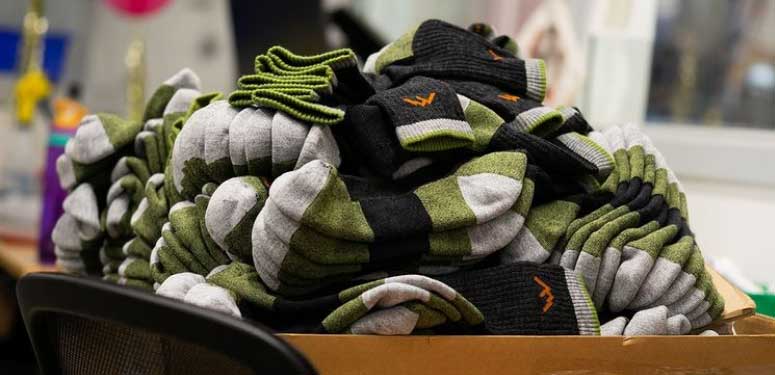
Merino wool is quite a dense fiber, making it a good structural base for creating padding and support within the sock.
Polyester and nylon are fabrics you will also see in socks designed for the outdoors. These are synthetic materials, but they help with wicking and are also able to dry quickly. Performance socks usually contain some percentage of spandex, which helps them keep their shape and fit well to your foot. There are lots of socks made with the wool/synthetic blend, which offer the best of both worlds in terms of comfort, durability and odor prevention.
You should absolutely stay away from cotton. Cotton is not a good material for a hiking sock because it absorbs moisture, it doesn’t dry quickly, it is heavy and has poor insulation properties, especially when wet.
2. Height
The sock height marks how high the sock comes up your leg. It mostly comes down to the personal preference, but it is important to think about sock height with reference to the weather, the terrain and the type of footwear you are going to wear. Sock heights are relatively universal, and these are the most common in hiking socks, form the shortest to the longest cut:
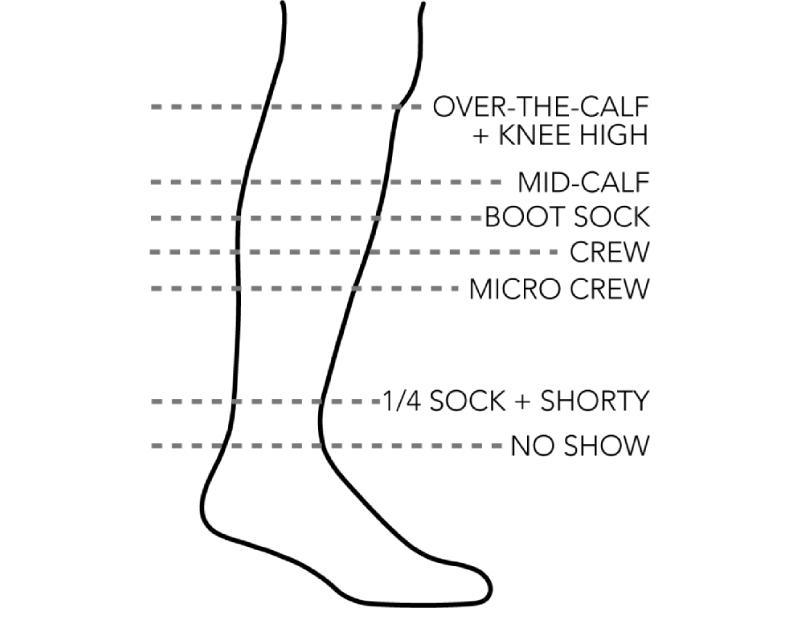
Size chart by Darn Tough
- No-show. This is the shortest option that come just up to the ankle, leaving the ankle exposed. They work best with trail runners, sneaker and other soft-type footwear.
- Ankle. The ankle socks just cover your ankle bones and give a little bit more protection. This is the shortest option you should go for when hiking in a more rigid footwear.
- ¼ sock. Quarter socks sit just above the ankle, and they are great for low-cut hiking boots, running shoes, and sneakers.
- Crew. Crew length is the standard for a hiking sock. They work well with almost any kind of hiking footwear, from trail runners to boots. They will come up anywhere from 8.5 to 10.5 inches up your calf, measuring from the heel, depending on the model.
- Boot Socks / Mid-Calf. These are usually a bit higher than crew socks, sitting mid-calf for added protection and warmth. Men’s-sized socks tend to reach a bit higher on the leg compared to the women’s sock heights, so women’s boot height is practically men’s crew height.
- Over the Calf / Knee High. The tallest socks, also the warmest and the most protective, are great for mountaineering or winter backpacking. They come over your calf, and up to your knee, anywhere form 16.25” to 17” from the heel up.
3. Cushion
Cushion is a padding within the sock created by knit terry loops. You want to have some extra padding, especially around the heel and around the forefoot where the sock needs to have a little bit more cushion where there’s a lot of pressure. This is great for high-impact activities, such as trail running and backpacking.
There are four levels of cushioning in hiking socks: ultra-light, lightweight, mid-weight and heavy weight. As the socks get thicker the cushioning increases. Ideally the ultra-light and lightweight cushion works really well with shoes, while the mid-weight and the heavy weight are great for trekking and hiking boots.
4. Fit and compression
Always look for a nicely tight-fitting sock with as little wiggle room within the sock as possible. Having the snug fit to your foot will minimize any slipping or bunching that could potentially happen. This makes a big difference when you are traversing sloped terrain where you are potentially off trail and notice that your socks tend to slip and move and bunch around. Some hiking socks feature compression bands in the arch area, which adds support and improves the fit.
With a tight fit you are far less likely to end up with hot spots, blisters and general discomfort when you are on a challenging terrain. However, you do not want a sock that is too tight either, as your feet are going to swell a bit while you are hiking. So think snug, rather than too tight. Also, you want to make sure that the heel cup of the sock lines up well and fits well to your heel.
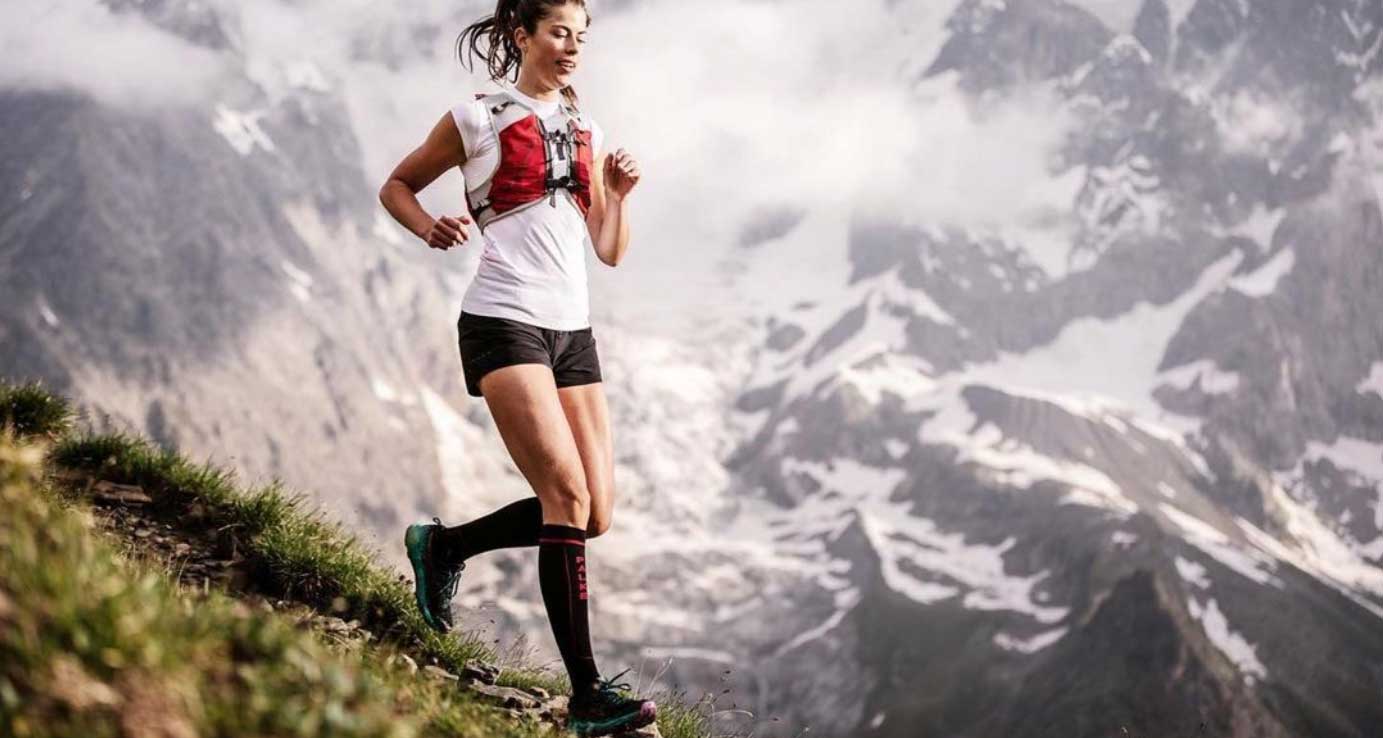
In recent year we have seen more and more athletes and outdoorsmen wearing compression socks. These are extremely tight socks that go almost to your knees, and supposedly aid blood flow for people that are prone to blood clothes. There are some reasons though why you would want to wear this type of socks for hiking. If you are susceptible to getting sore calves, or you have an injury, compression socks can help reduce the discomfort. They also add to the feeling of comfort and warmth for some people, which may not be measurable, but it’s still important.
5. Seamless construction
This might seem pretty obvious, especially if you have been hiking for a while. You don’t want to have an exposed seam within the sock, because it is going to create a space for your toes to rub up against. This is going to create hot spots, or even blisters. The so-called seamless construction means that toes are sewn in a way that leaves no seam lines on the inside.
6. Anatomic shape
Anatomically shaped socks are specifically shaped for left and right feet, and are contoured to fit perfectly. Your left and right foot are different, in fact, they are the mirror image of one another. If you are wearing a hiking sock that is not specifically designed for the left and the right foot, you are simply not getting the optimum fit. This can be a significant factor for people whose big toes are longer than the rest of their toes.
Men’s vs Women’s socks
Men’s and women’s feet have anatomical differences. Our shoes feature distinct fits, so why wouldn’t our socks? Some manufacturer, like Smartwool, developed a specific fit for each, with women’s socks featuring a slimmer heel pocket, narrower profile, and women-specific mesh ventilation zones. Men’s socks feature a wider profile, that works for wide feet.
Many socks on the market are unisex and typically work for both sexes, and that is alright. The one big difference that we have notice though, is that women’s hiking socks come in a all colors of the rainbow and fun patterns, while men’s socks feature more muted colors like blue, green, gray, shades of red and, of course, black.
Our go-to brands of hiking socks
There are plenty of great companies that make awesome socks, but for hiking enthusiasts here at NorthWest Outlet, there two great American sock companies that we always go back to: Smartwool from Colorado and Darn Tough from Vermont. Both these brands focus on Merino wool as the key component to their garments.
Smartwool

For over 20 years Smartwool has been pushing the boundaries of Merino to create smarter, more capable products from head to toe. Each pair of Smartwool socks is carefully crafted using the finest Merino wool to keep your feet dry and regulate body temperature so you can wear Smartwool in various conditions.
Not only are Smartwool socks extremely comfortable, they also come in really fun styles and colors, making them a stand out in the performance socks market. Smartwool offers anywhere from ultralight to heavy cushioning, as well as different sock technologies tailored for a slew of different activities to keep your feet happy. If for any reason you’re not satisfied with your Smartwool socks, you can return them within two years of purchase and Smartwool will make it right.
Darn Tough

Darn Tough is a family owned business that has been knitting socks in Vermont for close to 40 years. Their mission is simple: to create the world’s best socks and stand behind them unconditionally. Darn Tough sock makers love and breathe in stitches per inch, seamless toes and cross stretch. After so many decades Darn Tough still craft every pair of their socks in Vermont.
When you purchase a pair of Darn Tough socks, you’re also getting a lifetime warranty that covers all the damage caused by wear and tear. So, if you wear them out, Darn Tough will replace them—no questions asked. Plus, designers use sustainable materials, like Merino wool, to create socks with less waste from start to finish.
There are also many other sock brands worth mentioning, like Icebreaker, Thorlo, Wigwam, the new-comer Injinji , but we’ll leave them for another time.
Why do you get blisters on your feet?
Most people are quick to blame getting blisters on poorly fitting footwear, but the truth is there is more to it than bad shoes, heat and moisture. So what actually causes blisters?
Despite the popular belief, these painful fluid-filled pockets are not caused by friction, at least not in the sense that most people consider friction, which is rubbing. The blisters are actually caused by shear and the skin stretching too much. Let’s explain.
For the most part there are three layers of the skins: the epidermis, dermis and subcutaneous. The outermost layer, the epidermis, has 4-5 layers. Most areas have four, but in regions such as palms of your hands and the soles of your feet, where the skin is exposed to greater friction forces, there are five.
Repeated rubbing over one area of your skin creates forces that causes a split in the epidermis, allowing a plasma-like blister fluid to form in the space between the layers. So it is actually the internal part of the skin stretching that causes blister, not the rubbing over the external part of the skin.
If all of this does not make sense for you, here is a great video that explains the cause of foot blisters:
Expert blister prevention tips
Here are some tips from an avid hiker and a New York Times bestselling travel book author Karen Berger:
Double-check the boot fit. If you’re a beginning backpacker and you’re not used to the feel of hiking boots, wear them at home for a couple of days for several hours to be sure they are comfortable. Seek out a reputable store and an experienced salesperson to find the best fit. If you wear them at home and they don’t feel right, you can take them back to the store for exchange.
Toe tap test: lace your shoes as you would normally do, then tap your toes on the ground. If you feel you toes hitting the front of the shoe, it is not a good fit.
Break in your boots. This is usually as much of an issue of toughening your feet as softening your boots. Any way you look at it, your feet and boots are going to have to reach a compromise, and better they work out their differences near home than on the trail. I like to walk about 50 miles in new boots before I hit the trail (which is great exercise, too). But even trustworthy comfy boots need to be reintroduced to your feet if you’ve been sitting around all winter. Before a big trip, I’ll go out for a couple of four- or five-mile shorties near home, just so my feet and my boots can renew their acquaintance.
Wear wicking socks. Polypropylene or nylon are fine—under a pair of wool or wool-and-nylon blend outer socks. The wicking socks are less abrasive, plus they move moisture away from your feet. Never wear cotton socks—cotton absorbs moisture and practically guarantees blisters.
Go easy on the mileage and keep your pack weight as low as possible.
The absolutely number one most important rule of blister prevention: The second you feel the slightest hint of something rubbing in your shoe, STOP! Ignore your hiking partner’s pleas to just keep going. Find the pebble, grass-seed, clump of dirt, grain of sand, or wrinkle in the sock. If it’s a tight boot that’s causing trouble, rub the inside of your boot with the blunt, rounded end of a Swiss army knife to try to stretch the leather or fabric.
Treat a hot spot with moleskin on the trail. If you know you’ve got a vulnerable trouble spot, like the back of your heel, put a piece of moleskin on it before you start walking. If a blister has already started forming (it can happen in mere seconds), use a dressing called Second Skin. This dressing was developed to treat burns—and after all, blisters are nothing more than friction burns. Whether you’re putting moleskin over a hot spot or adhesive tape over a Second Skin dressing, remember that tape adheres better to dry skin than wet skin—so use a bandanna to dry your sweaty feet first.
Find your perfect pair at outlet prices in out online store
Happy feet = happy hiking! Explore our wide range of special walking, hiking and climbing socks curated for active people who want to get the most out of every outdoor experience. Northwest Outlet is proudly carrying the best performance sock brands in the outdoor industry.
